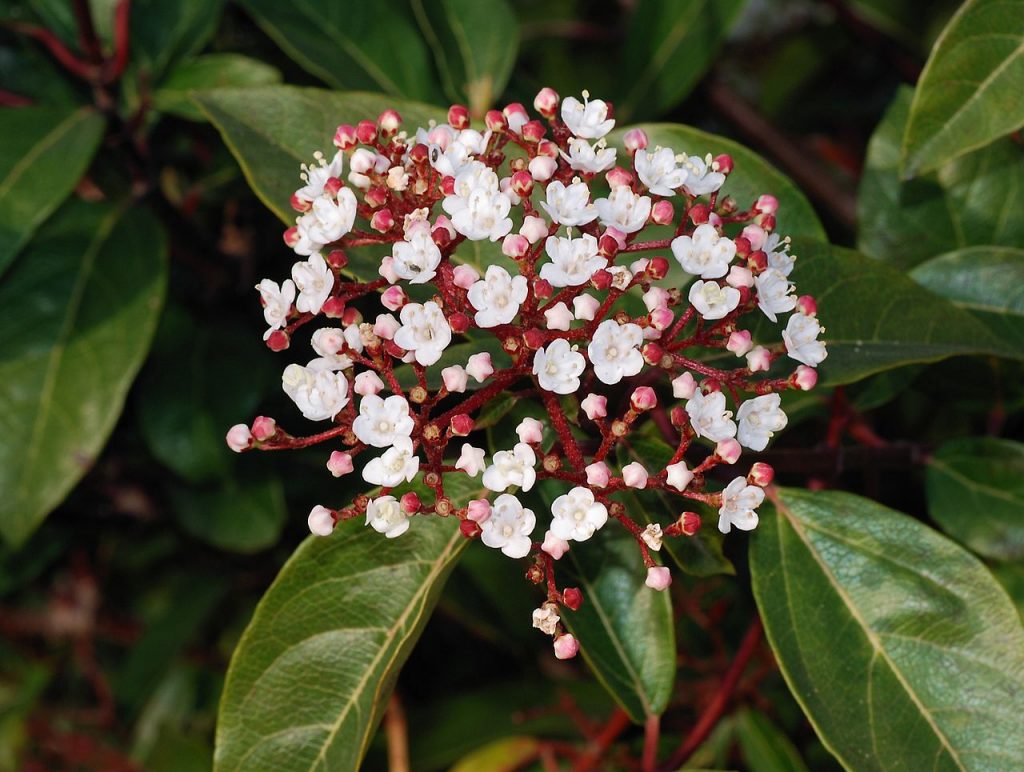
Laurustinus is an evergreen shrub or small tree native to shrubland and wooded rocky slopes of the Mediterranean area of Europe and northern Africa. It is a very attractive plant and grown in modern times both in Europe and the US for its flowers and berries. Although there is no physical evidence for laurustinus’ presence in ancient Pompeii, it is shown in the garden wall paintings of houses destroyed by the eruption of Vesuvius in 79 AD and grows in the modern day Pompeii area. The ancient writer, Pliny the Elder, mentions the plant in his work, Natural History, while discussing laurels. He calls it tinus, the specific epithet of its modern botanical name. In the words of Pliny the Elder:
There is the tinus, for instance, by some considered as a species of wild laurel, while others, again, regard it as a tree of a separate class; indeed, it does differ from the laurel as to the colour, the berry being of an azure blue.
Pliny’s second choice regarding taxonomy is correct; laurustinus is not related to laurel and is in the moschatel family, Adoxaceae, that also includes elderberries.
Photo Credit Alvesgaspar-Wikimedia-Commons

Description: Laurustinus usually grows up to 12′ tall, is densely branched, and rapidly forms a rounded form. The opposite, narrowly ovate to oblong leaves are up to 4″ long, and have lustrous dark green topsides and pale green undersides. In late winter, 4″ wide, flat, terminal clusters of pink buds appear and open to fragrant white flowers that attract butterflies, bees, and other pollinators. The bright metallic blue berries that follow are 1/4″ across and eaten by birds. The plants are valued in modern times for use in shrub borders and as a hedge or screen. It was an excellent choice for the back of the border in an ancient Roman inspired garden.
Size: 8-23′ H x 6-10′ W
Light: Full sun to part shade
Soil: Moderately fertile, medium moist, well-drained
Hardiness: Zones 8-10